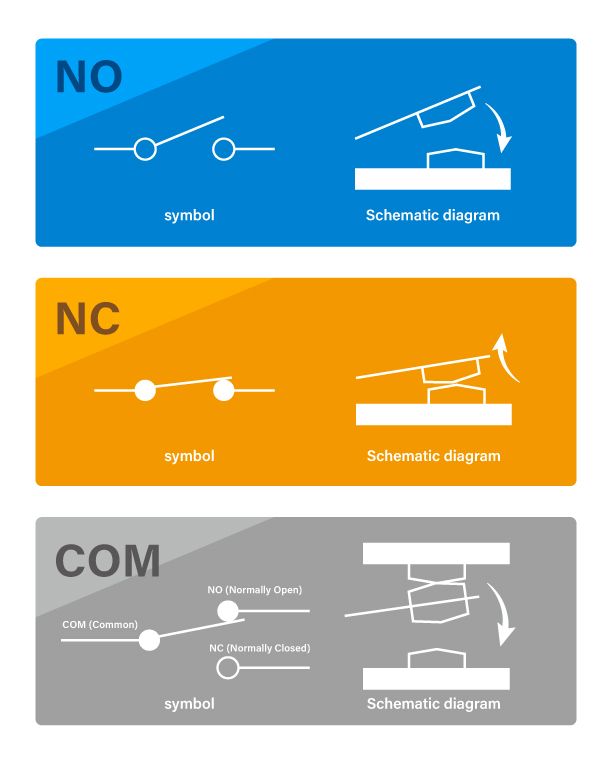
Difference Between Latching and Momentary Button Switches: Exploring Switch Actions and Contact Types
Are you puzzled about which type of button switch to use for your circuit? In this guide, we'll delve into the details of button switches, helping you understand their various contact types. This will make it easier for you to choose the right product!
Operation Principles of Button Switches
Button switches typically function by completing or interrupting circuits upon pressing or releasing. When the button is pressed, it comes into contact with conductive material inside the switch, allowing current to flow through the circuit. Conversely, when the button is released, the contact is broken, interrupting the circuit and stopping the flow of current. This mechanism enables the switch to control the activation or deactivation of connected components.Composition of Button Switches
Button switches consist of a button or actuator, a housing or enclosure, and internal components such as contacts, springs, and terminals. The actuator is the part pressed by users to operate the switch, while the housing provides protection and support for the internal components.Understanding Latching and Momentary Button Switches
Switch actions are classified into latching and momentary types, distinguished by their behavior after activation. Momentary switches, also known as non-lock switches, provide a momentary connection signal upon pressing, returning to their original position when released. On the other hand, latching switches, also referred to as lock switches, maintain their state (either on or off) until pressed again to change it. They are commonly used for power switches, requiring toggling between on and off states.
NO / NC / COM Contact Circuit of Button Switches
The NO (Normally Open), NC (Normally Closed), and COM (Common) terminals of button switches describe their common terminal terms, defining their basic circuit connection modes.List item
- NO (Normally Open) Terminal – It remains open when the button is not pressed. When the button is pressed, the NO terminal connects to the COM terminal, completing the circuit.
- NC (Normally Closed) Terminal – It remains closed when the button is not pressed, connected to the COM terminal. When the button is pressed, the NC terminal disconnects from the COM terminal, breaking the circuit.
- COM (Common) Terminal – The central terminal of the button switch, used to connect the power source and output. The COM terminal connects separately to the NO and NC terminals, forming the switch circuit.
NO / NC / COM Contact Circuit of Button Switches
These terminals control the opening and closing of button switches, thereby controlling the circuit's on and off states. This combination provides the flexibility of button switches in various applications, such as using the NO terminal to trigger an action or the NC terminal to prevent one. Button switches are versatile components, playing critical roles in electronic devices and systems, from simple switching functions to complex circuit controls.You can buy high-quality push button switches with various functions at YIS Marine!
You can find suitable products below, including the waterproof metal button switches PB4411 / PB4511 series, along with an informative video for your reference. Feel free to contact our sales team for more information!- Video
- Related Products
DC 12V 24V High Current 19mm Stainless Steel LED Push Button Switch Waterproof
PB4411 Series
The PB4411 / PB4511 series is a line of large current stainless steel push-button switches...
DetailsLarge Current Stainless Steel Push-Button Switch
PB4511 Series
button switches 20a watherproof dc push switch illuminated 19mm round ip67 metal ss stainless...
DetailsAnti-Vandal Stainless Steel Push-Button Switch
PB-4212 Series
Metal push button switch with LED light ring, rated at 5A 12VDC.
DetailsMetal Buzzer with flashing LED warning
PB-BZ-1R
Metal buzzer with flashing red LED light and 80dB warning sound. Rated at DC 12V.
Details




